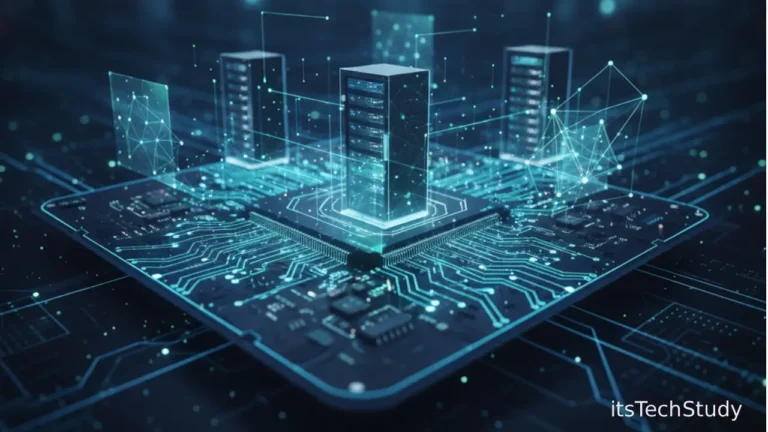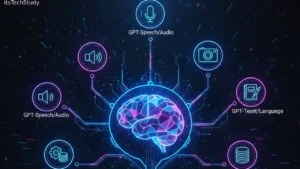Introduction: The End of the Password Era
For decades, passwords have been the cornerstone of digital security — a necessary yet frustrating part of daily life. We’ve all been there: resetting forgotten passwords, juggling complex combinations, and dealing with endless two-factor authentication codes. As the digital landscape expands and cyberattacks grow more sophisticated, traditional passwords are quickly proving to be one of the weakest links in cybersecurity.
Enter biometric authentication – a technology that promises to make security both stronger and simpler. Instead of remembering long strings of characters, you can now unlock your phone, access your bank account, or sign into a secure system with a simple scan of your face, fingerprint, or even your voice.
This transformation isn’t just convenient; it’s revolutionary. In a world dominated by AI advancements, smart devices, and cloud computing, biometric security has emerged as a cornerstone of modern cybersecurity and digital identity protection. But as with any powerful technology, it brings both benefits and challenges that demand deeper understanding.
What Is Biometric Authentication?
Biometric authentication refers to the process of verifying a person’s identity using unique biological traits. These traits are nearly impossible to duplicate, making biometrics far more secure than traditional passwords or PINs.
Common Types of Biometric Authentication
- Fingerprint Recognition – Uses unique fingerprint patterns. Common in smartphones and laptops.
- Facial Recognition – Scans facial features for verification. Used in phones, airports, and surveillance systems.
- Iris and Retina Scans – Analyze eye patterns; highly secure and used in high-security environments.
- Voice Recognition – Matches voice patterns and tone for access control.
- Behavioral Biometrics – Tracks unique behaviors such as typing rhythm or walking style.
How Biometric Authentication Works
Biometric systems rely on three key stages:
- Data Capture: The device captures a biological sample (like a fingerprint or facial image).
- Template Creation: The system converts the captured sample into a digital template using algorithms.
- Matching and Verification: When a user attempts access, the system compares the new sample to the stored template to confirm identity.
This process happens in milliseconds — providing security that feels almost invisible to the user.
The Technology Behind Biometrics
The magic of biometrics lies in machine learning and AI-driven algorithms. These systems are trained to detect even minute differences between human traits, allowing them to distinguish one face or fingerprint from millions of others.
Modern biometric systems leverage technologies such as:
- 3D Facial Mapping for accurate recognition even in different lighting.
- Neural Networks for improved accuracy through continuous learning.
- Secure Enclaves to store encrypted biometric data locally, reducing the risk of breaches.
- Liveness Detection to prevent spoofing using photos or recordings.
Comparing Biometric vs. Traditional Authentication
| Feature | Traditional Passwords | Biometric Authentication |
|---|---|---|
| Ease of Use | Requires memorization | Quick and effortless |
| Security Level | Vulnerable to hacks & leaks | Unique to individuals |
| Recovery Options | Reset required | Difficult if data is corrupted |
| Scalability | Easily implemented | Costly for large systems |
| User Experience | Frustrating for many | Seamless and intuitive |
Why Biometric Authentication Is the Future
In 2025, with tech innovations like AI-powered identity verification and the Internet of Things (IoT) expanding rapidly, biometric authentication is becoming a default security feature.
Key Advantages of Biometrics
- Enhanced Security: Harder to forge or steal than passwords.
- Convenience: No need to remember or manage credentials.
- Speed: Instant verification reduces login friction.
- User Trust: Builds confidence in digital systems.
- Integration: Works across multiple devices and applications.
Challenges and Limitations of Biometric Systems
While biometric authentication offers impressive benefits, it’s not without flaws.
Potential Risks and Drawbacks
- Privacy Concerns: Biometric data is sensitive — once compromised, it can’t be changed like a password.
- Data Breaches: Centralized storage of biometric data is a potential goldmine for hackers.
- False Positives/Negatives: No system is perfect; errors can occur due to lighting, injuries, or aging.
- Implementation Costs: Advanced systems require significant investment.
Pros and Cons of Biometric Authentication
Pros:
- High accuracy and reliability
- Fast and user-friendly
- Reduces password fatigue
- Difficult to replicate or share
- Enhances mobile and online security
Cons:
- Privacy and ethical concerns
- Potential data misuse
- Hardware costs for deployment
- Limited accessibility in some cases (e.g., facial recognition with masks)
Biometric Security in Everyday Life
Biometrics are no longer confined to spy movies or government labs — they’re part of everyday technology.
Where You’ll Find Biometrics Today
- Smartphones and Laptops: Face ID, Touch ID, and Windows Hello.
- Banking and Payments: Biometric-enabled ATMs and mobile wallets.
- Airports: Facial scans streamline immigration and boarding.
- Healthcare: Patient identity verification to prevent fraud.
- Corporate Security: Fingerprint or iris-based access control.
According to market research, the global biometric authentication market is expected to surpass $90 billion by 2027, growing at a rapid pace as digital transformation continues.
Biometric Authentication and Cybersecurity
In an era of AI advancements and rising cyber threats, biometrics are redefining cybersecurity strategies. They add an extra layer of defense, making it exponentially harder for cybercriminals to gain unauthorized access.
Key Cybersecurity Benefits
- Multi-Factor Authentication (MFA): Combines biometrics with PINs or tokens for superior security.
- Fraud Detection: Behavioral biometrics can detect unusual activity patterns.
- Data Protection: Biometric encryption protects sensitive information on devices.
However, the cybersecurity landscape still demands a cautious approach. As hackers evolve, so must the technologies defending against them. Continuous system updates and decentralized data storage are essential to minimize risks.
Emerging Trends in Biometric Technology (2025 and Beyond)
Biometric technology continues to evolve rapidly, blending with AI, cloud computing, and blockchain to enhance both accuracy and security.
Top Biometric Trends to Watch
- AI-Powered Adaptive Biometrics: Systems that learn user habits over time for higher accuracy.
- Biometric Blockchain Systems: Secure identity verification without centralized storage.
- Wearable Biometrics: Smartwatches and fitness bands with built-in sensors for access control.
- Contactless Recognition: Facial and voice ID replacing touch-based systems post-pandemic.
- Cross-Device Identity Linking: Unified biometric profiles across multiple smart devices.
These trends indicate that biometric authentication is not just a passing phase — it’s shaping the future of digital identity and cybersecurity.
Best Practices for Safe Biometric Use
If you’re using or planning to deploy biometric systems, follow these best practices to enhance privacy and safety:
- Opt for Local Storage: Ensure biometric data is stored on the device, not in the cloud.
- Enable Multi-Factor Authentication: Combine biometrics with PINs or passwords.
- Use Trusted Devices: Avoid third-party apps or hardware without strong security credentials.
- Update Software Regularly: Keep systems patched to prevent vulnerabilities.
- Understand Consent Policies: Always know how and where your biometric data is used.
Conclusion: The Future Is in Your Hands — and Your Face
The shift from passwords to biometric authentication marks a pivotal moment in digital security. As we embrace a passwordless future, the balance between convenience and privacy will shape how we interact with technology.
Biometrics make authentication effortless and secure, but users and organizations must remain vigilant about data privacy and ethical use. As AI innovations and smart device ecosystems continue to expand, biometric security will play a vital role in protecting digital identities across industries.
The message is clear: in the future of cybersecurity, your face isn’t just your identity — it’s your key.
Frequently Asked Questions (FAQ)
Q1: Is biometric authentication completely secure?
Ans: No system is 100% secure. While biometrics are far safer than passwords, breaches can still occur if data is stored insecurely or the system lacks encryption.
Q2: Can hackers steal biometric data?
Ans: Yes, but it’s much harder than stealing passwords. Strong encryption, local data storage, and liveness detection significantly reduce this risk.
Q3: What happens if my biometric data is compromised?
Ans: Unlike passwords, biometric traits cannot be changed. That’s why secure storage and limited data sharing are crucial for protection.
Q4: Are biometrics safe for privacy?
Ans: Yes — when used responsibly. Always ensure that companies handling your biometric data comply with privacy laws like GDPR.
Q5: Will biometrics replace passwords completely?
Ans: Not entirely — at least not yet. Biometrics work best as part of multi-factor authentication (MFA), providing both convenience and layered security.
Q6: What is the most secure form of biometric authentication?
Ans: Iris and retina scans are currently considered the most secure, followed by multi-modal systems combining several biometric factors.












No Comments Yet
Be the first to share your thoughts.
Leave a Comment